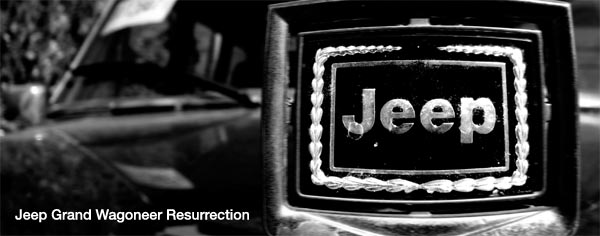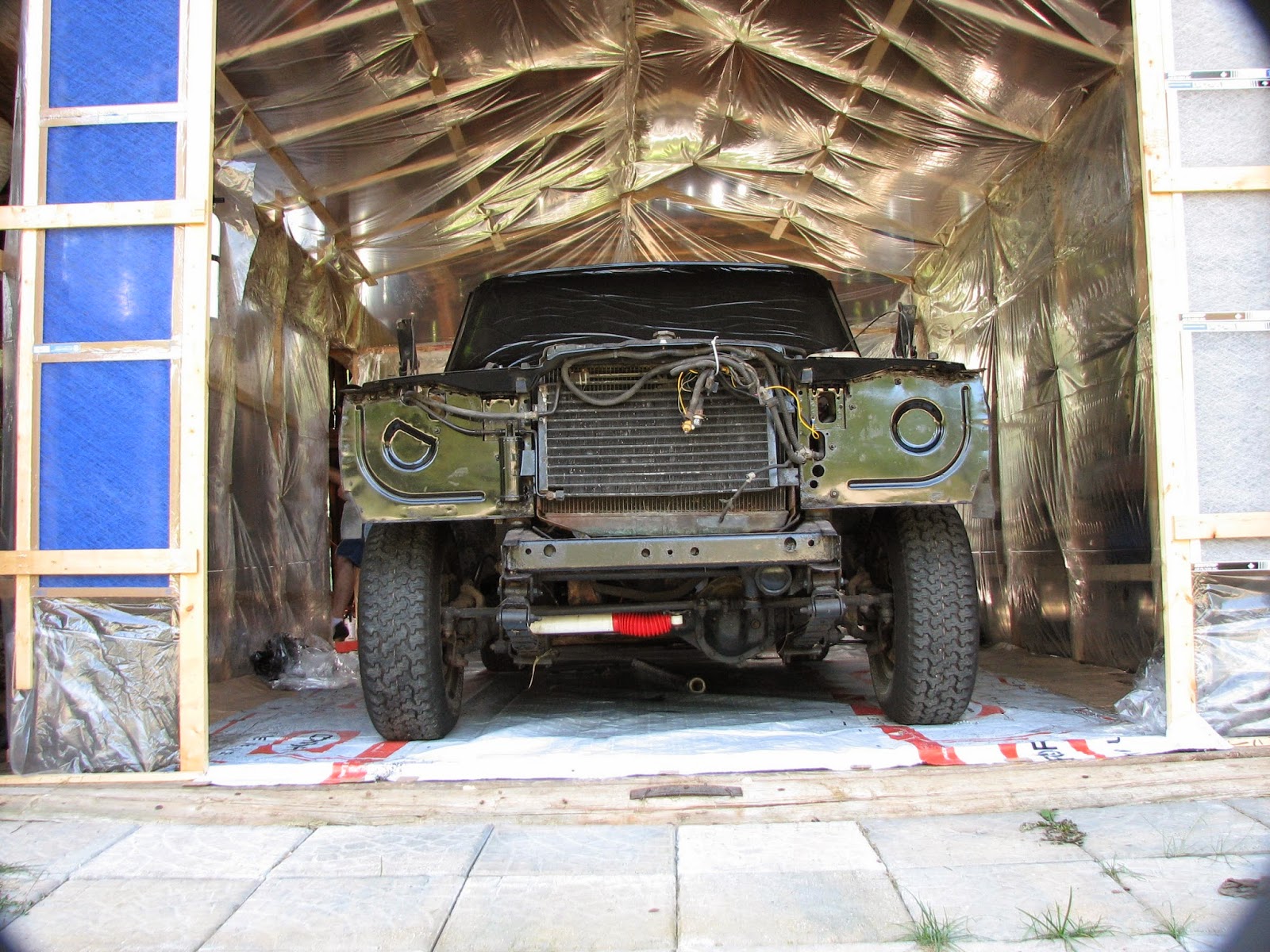I had long since heard of one of the few remaining vintage salvage yards in my area, but had never been. I knew they had 3 old Wagoneers but I had no idea as to the condition. I made the trek with my dad in hopes of finding some cosmetic adjustments for my rig.
It's no secret that Jeep pinched some pennies over the years, take the fact that they never changed dies as an example. In turn, this makes for some easy swapping for enthusiasts. Here's how it went down.
When I went to the yard, I was not disappointed. Hundreds of classic American (and some imports) dotted the fields, I spent most of a day just wandering and drooling. However, it was the wagoneers I was interested in. There were 3, but one was so hacked I didn't take any parts. I nabbed the grilles off a 68 wagon, and a 73. The 68's grille was actually pretty trashed and I got it for $25, but the 73 had a very good grille, it was $50. Inside the 73 were 2 other wagon grilles, a full 75 egg crate and an 80 pig nose (both $25 each)
The 'Cheese Grater' grille. One of my faves, though not popular.
The infamous 'Razor' grille. This, along with the egg crate, pig nose, and final grille, hang in my parent's barn.
I nosed the rig into the garage and cut the zip ties that I'd installed to hold the grille on. It popped off no sweat and gave me access to the mount tabs. You must have the courage of your convictions for this next phase, as it involves cutting off the brackets and filing the headlight punch-out to fit the old lights back in.
There were 3 mounts, which I drilled out the spot welds on and treated the bare rusty steel beneath.
With the headlight removed, it took a bit of time to test fit the new/old light mount and get everything filed up. It wasn't hard, just a little repetitious; fit, file, repeat.
This part felt so, so good. I knew once seeing this that it just looked so right and I'd made the right choice to swap back.
The 73 grille is what I went with, as it was the most complete and in the best shape. It shared most of the same mount points but had a few extra hidden ones around the light bezels which I just used some self tappers on.
I think it looks a lot better. It suits the body style of the truck better and I think, looks a little meaner. It also doesn't stick out as far so it's easier to work on the engine.
I then cleaned and painted the bumper that I had made a while back. I went with satin black Tremclad so that it looked powder coated, but could be easily touched up. I think the hooks came from TSC, they were a gift from my folks. I thought they looked just right.
I cleaned the mossy green stuff off the grille and did a little bit of straightening, but it could use more tweaking. I have yet to (even as of 2015) paint and add the hood bar to block off the opening. I got a pretty good one off the 68 wagoneer.




























































